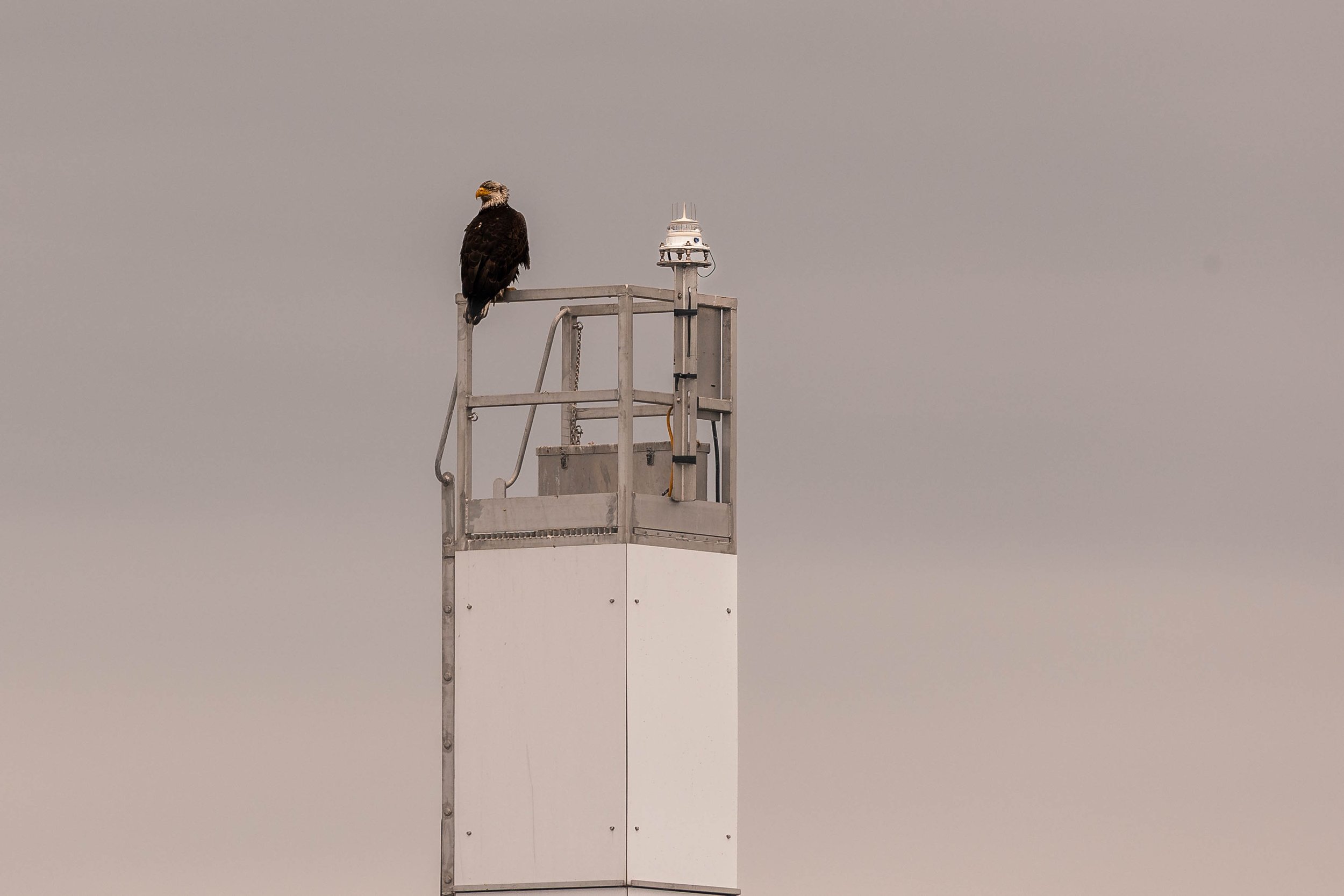June 12, 2025, 10:30 AM - Big friends in the Salish Sea.
It was a moody West Coast morning as we pushed off the dock aboard our open vessel, Cascadia. Eyes were peeled and spirits high as we set off, cozy in our flotation suits. A light drizzle and a brisk wind accompanied the first leg of our journey, making us grateful for our bundled layers. The overcast skies are a blessing; white whale blows and splashes stand out brilliantly against the dark grey backdrop.
After about an hour of searching, we spotted blows! We had come across a group of humpback whales socializing in the area. Our naturalist quickly readied the camera for identification photos, keeping an eye out for flukes. While dorsal fins can also be used for identification, the underside of a fluke, up to 18 feet wide, is often much more distinct and easier to catalogue. Like a human fingerprint, each fluke is unique.
So, who was with us today? Among the group were Cirque (BCY1059), Kata (BCY1218), Astroboy (BCX2152) and one unidentified individual. Even with a powerful lens and patience, we aren’t always able to identify every whale present. On this occasion, we recognized three familiar tails and one mystery companion.
But what makes each tail so unique? Let’s dive into the fascinating world of humpback whale flukes, their scars, and what these markings reveal about their lives.
The flukes, the two lobes of the tail, feature a mix of black and white pigmentation on their undersides, with patterns that remain consistent throughout the whale’s lifetime. This makes them ideal for identification. Key features include the trailing edge (the serrated border of the fluke, often with distinct nicks and notches), the median notch (the V-shaped dip between the lobes), and any visible scars or deformities caused by injury or interaction.
So, how do these scars form?
Orca predation is one cause. Transient orcas occasionally prey on humpbacks, particularly calves. Their teeth can leave parallel rake marks, often seen on juveniles, suggesting younger whales are more vulnerable.
Entanglement in fishing gear is a more common and serious threat. Lines, ropes, and nets can wrap around a whale’s flukes, pectoral fins, or mouth, causing deep cuts, permanent notches, or even amputations. Vessel strikes can also leave scars from propellers or blunt force trauma. Between these two human-related threats, studies suggest that roughly 80% of humpbacks show signs of human-caused scarring.
Even their barnacle passengers leave a mark. The humpback whale barnacle (Coronula diadema) begins life as a free-swimming larva before permanently attaching to a whale’s skin. It secretes a fast-curing, cement-like substance to anchor itself and grows a rigid, conical shell that embeds deeply into the outer skin layer. When a barnacle dies or is dislodged, often during breaching or rubbing against surfaces, it leaves behind a distinctive, pale circular scar. These markings can persist for years and help researchers track individuals.
Finally, male competition during mating can also leave scars. Males sometimes ram one another during aggressive displays, leaving bruises, gouges, and abrasions on their flukes and bodies.
Each scar tells a story. Taken together, these markings form a living record, one that scientists read to better understand the life history, movements, and struggles of each humpback whale we encounter.
After spending time with these giants, we continued meeting a couple of other members of the Salish Sea. Bald eagles and California sea lions, two iconic species of the Pacific coast. Perched high in the treetops or soaring overhead, bald eagles impressed with their massive wingspans, up to 8 feet across! These skilled hunters often scan the shoreline for fish or scavenge from other predators. Along the log booms, groups of boisterous California Sea Lions lounged and barked at one another. California Sea Lions are known for their noisy, playful behaviour and impressive agility, both in water and on land. Males can weigh over 800 pounds and develop a noticeable bump on their heads called a sagittal crest. Always a treat to see these charismatic coastal residents in their natural habitat!
Enjoy the photos taken by Hayleigh Hilbert below.
Kata surfacing in front of another.
A mini fluke waterfall.
Astroboy’s flukes.
Kata with Astroboy diving behind.
Astroboy’s dorsal.
Flicking some water around.
The spot where the freash water from the Fraser River meets the salty sea.
One of Astroboy’s flukes.
Astroboy fluking.
Kata’s dorsal fin.
A heart shapped blow!
Astroboy’s dorsal.
Kata’s fluke.
Kata diving.
A California Sea Lion posing on the log.
A male California Sea Lion resting.
A juvenile bald eagle. They won’t get their fully white head and tails until around 5 years old.
Majestic even when young.
Watching us back!



















